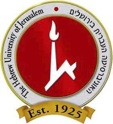Dr. Anna Shipov
Osteoporosis
Osteoporosis is a common and severe disease affecting millions of people world-wide with substantial financial implications. The rat is a common and well-established model of bone diseases in general and osteoporosis in particular. Nonetheless, very little is known about the properties of cortical bone in the normal rat.
In this study we describe the detailed structure (at different length scales) and mechanical properties of rat cortical bone, using light microscopy, polarized light microscopy, electron microscopy and synchrotron-based microtomography. We also investigate the biomechanical properties of the cortical bone of rats using tensile and bending tests performed under light microscopy, and within the electron microscope chamber, as well as nanoindentation. These studies will allow the determination of the biomechanical properties of rat bone.
Preliminary studies of the normal rat cortical bone revealed two distinct regions within the bone;one highly organized, circumferential lamellar region which located endostealy and periostealy, and a disorganized region sandwiched in between. We suspect that the existence of these two types of bone reflects the developmental and growth process of the bone, and hypothesize that those 2 different types of bone would have different structural, compositional and biomechanical properties.
We also plan to investigate the influence of estrogen deficiency (using bone samples from ovariectomized and non-ovariectomized rats) on the structural and mechanical properties of rat cortical bone. We hypothesize that estrogen deficiency will alter bone structure and properties in general and will have different effects on the two types of bones identified in rat cortical bone.


